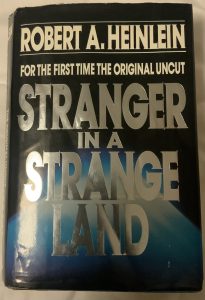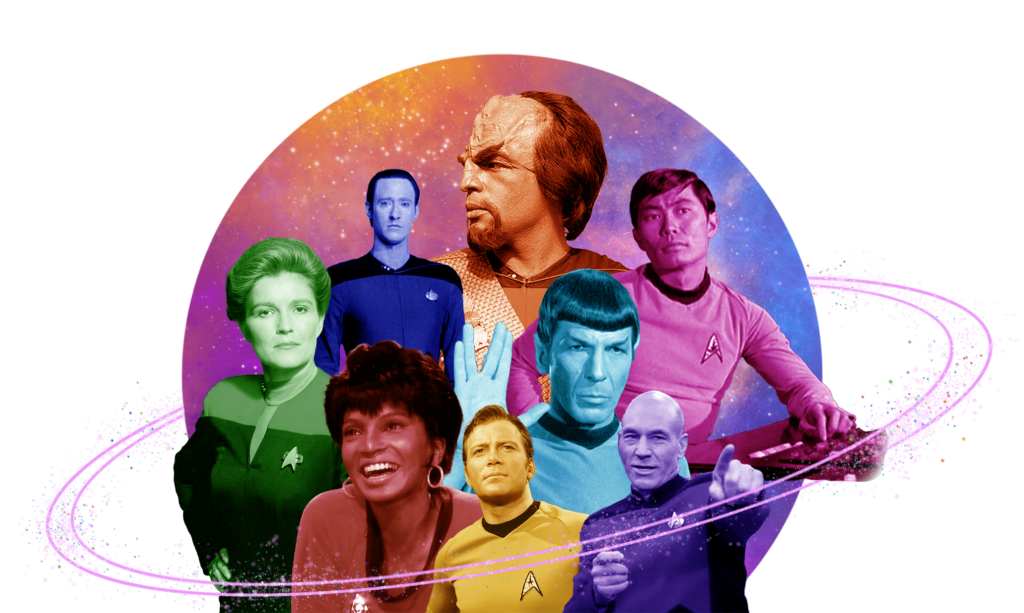Blog Overlord Post #3
A Clockwork Orange is a name that is likely familiar with most of you, as it has been made famous by Stanley Kubrick’s 1971 film . I personally had never seen the movie when I stumbled upon this book in a small book/music shop in Peekskill, New York called “The Bruised Apple” (if you find yourself in that town, you should go!! If not for the books then for the records or the pinball machine). I decided this book, being rather short and well known, would be “a nice easy beach read for vacation!” So I bought it and boy… nie have I made a worse assumption!
A Clockwork Orange, the book, is written with roughly 10% of its contents in the completely made up words of the fictional language “Nadsat,” which are derived from Polish/Russian slang. This language is meant to display the odd mindset of the delinquent teens who are the center of story, and builds on one tenet I personally first encountered while reading Stranger in a Strange Land, but as a class we uncovered in The Octavia butler “Speech Sounds” introduction from WES: that being the “Sapir-Whorf Hypothesis” that one’s language determines how one thinks and acts in the world.
Here’s a blurb explaining some of Nadsat and its roots (I’m sorry it’s from Wikipedia but I printed a similar list from wikipedia while reading the book to decode some of the language that I had trouble grasping. I think its a good look into it for those who haven’t read this yet!):
“these terms have the following meanings in Nadsat:
droog (друг) = friend; moloko (молоко) = milk; gulliver (голова) = head; malchick (мальчик) or malchickiwick = boy; soomka (сумка) = sack or bag; Bog = God; horrorshow (хорошо) = good; prestoopnick (преступник) = criminal; rooker (рука) = hand; cal (кал) = crap; veck (“человек”) = man or guy; litso (лицо) = face; malenky(маленький) = little
( https://en.wikipedia.org/wiki/A_Clockwork_Orange_(novel)#Use_of_slang )
The list goes on and on… The language is extensive.
As for the plot, our main character, Alex, and his “Droogs”, go about committing “ultra-violence” while under the influence of “moloko-plus” (milk with drugs) in a dystopian future version of London where adult society is cooped in their houses at night due to teenage gangs running the streets at night, until one day Alex gets arrested (I won’t say how) and his gang is busted. In jail he is selected as the first prisoner to be used in the “Ludovico Technique,” an operation that removes the urge to commit violence from the brain, but also eliminates choice from a human’s life — arguably making them inhuman. As the text puts it, “When a man cannot choose he ceases to be a man.” While the rest of the book is mostly just Dystopian Fiction, the “Ludovico Technique” element of the plot I think qualifies as sci-fi-esque at the very least. In the final chapters of the book we see how society reacts to the use of this technique, and how Alex’s life is drastically effected. We also see how Alex’s “Droogs” change over the time that he is in jail. Ultimately the book concludes with Alex regaining his ability to choose (again, I won’t say how), but you will have to read it yourself to see whether he chooses love or violence.
I thought this book was very jarring to read due to the graphic nature of violence, however the conversation it inspired between me and my friend who read it about how important choice is within human nature, and what being “a clockwork orange” means, was really engaging but I wouldn’t say fun. The books takes 3-6 hours to read I am so unsure of whether it was worth it but definitely cant say it wasn’t? At the very most, it may be interesting to engage with the themes it brings up and to see the original text that Kubrick adapted if you have already seen the movie. However, don’t feel bad if you pass on this, and if you haven’t seen the movie don’t bother and don’t read this book if you wish to avoid work that imposes awful scenes on the reader.
This book was banned from several high schools in the 1970’s… and the Author himself wrote this of it.
“We all suffer from the popular desire to make the known notorious. The book I am best known for, or only known for, is a novel I am prepared to repudiate: written a quarter of a century ago, a jeu d’esprit knocked off for money in three weeks, it became known as the raw material for a film which seemed to glorify sex and violence. The film made it easy for readers of the book to misunderstand what it was about, and the misunderstanding will pursue me until I die. I should not have written the book because of this danger of misinterpretation.”
This being said, PLEASE do not read this if you are at all in a fragile or sad mind state. If you do read it, I suppose keep that Burgess quote in mind that he is NOT trying to glorify sex and violence, and try to get to the bottom of what his message is meant to be.
In short: I honestly couldn’t stop reading A Clockwork Orange due to wanting to know what happens to the main character in the end. I read it in two sittings, despite the fact that it was gruesome, and legitimately hard to read due to the extensive brutality throughout most scenes in this novel. It left me in a pensive but very dark mind state. Mainly I think I couldn’t stop reading because the made up language is creative and presents what I think is the only “fun” and oftentimes laugh-worthy aspect of this book. It does manage to provide humor amidst darkness, I must admit. The book also prompts philosophical discussion regarding choice and language that is worthwhile. I can’t quite recommend this but I can’t quite Dis-recommend it either. Overall: 5/10, so Toss a coin perhaps? Or just go for it if you have a draw towards the controversial and are in a good enough place to deal with 180 pages of pure evil bound together.
Welp, there you have it. A Clockwork Orange, folks!
TRIGGER WARNINGS BEFORE READING THE BOOK: Murder, Sexual Assault/Rape, Police Brutality:
Before reading this book it important to know that “ultra-violence” includes Murder, and Sexual Assault, and that police brutality is present in this book. The scenes of violence are extremely graphic, excessive, and frequent.

Burgess, Anthony. “A Clockwork Orange”. 1962.



 Diego Lasarte’s book review. Posted from Stephen Boe’s account because I don’t have access to the blog.
Diego Lasarte’s book review. Posted from Stephen Boe’s account because I don’t have access to the blog. In my junior year of high school, in an English class focusing on the formation of senses of place in the natural world, I read Tracy K. Smith’s poem anthology, Life on Mars, winning the Pulitzer Prize in 2012. The title is inspired by the David Bowie song of the same name, stylized as Life on Mars? The song itself paints a surreal picture of violence, confusion, injustice, and an ongoing battle between entertainment and ennui as the “girl with the mousy hair” watches a performance toeing the line between metaphor and reality.
In my junior year of high school, in an English class focusing on the formation of senses of place in the natural world, I read Tracy K. Smith’s poem anthology, Life on Mars, winning the Pulitzer Prize in 2012. The title is inspired by the David Bowie song of the same name, stylized as Life on Mars? The song itself paints a surreal picture of violence, confusion, injustice, and an ongoing battle between entertainment and ennui as the “girl with the mousy hair” watches a performance toeing the line between metaphor and reality.

